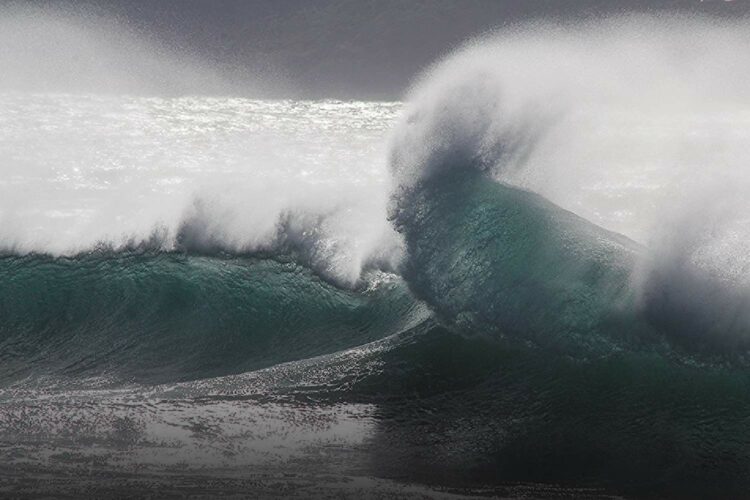Freak waves, often referred to as rogue waves, are a fascinating yet potentially hazardous oceanic phenomenon.
These unusually large and unexpected waves have been a subject of intrigue and concern for mariners and coastal communities worldwide.
While their causes are not entirely understood, they are known to have a significant impact when they occur.
This article explores the causes of freak waves and their prevalence in South Africa.
What are the known causes of freak waves?
Freak waves are characterised by their sudden and extreme height compared to surrounding waves. They can occur in various oceanic conditions, and multiple factors may contribute to their formation:
Wave Interactions
One leading theory suggests that the event may result from the convergence of smaller waves. When waves of different frequencies and directions intersect, they can combine to form a larger, singular wave.
Ocean Currents
The interaction between ocean currents and opposing wind patterns can create a phenomenon known as wave focusing. This can lead to the amplification of wave heights, potentially resulting in freak waves.
READ MORE – Freak Wave Hits Cape Coastal Towns: Gordon’s Bay Among Affected Areas
Nonlinear Effects
Nonlinear effects in the ocean can amplify wave heights, particularly in conditions of wave instability. These effects can cause waves to grow exponentially, resulting in the sudden appearance of a freak wave.
Wind Intensity
Strong and sustained winds can generate larger waves, increasing the likelihood of freak wave formation.
Seafloor Topography
The shape of the seafloor can also play a role in wave formation. In areas with rapidly changing underwater topography, waves can refract and converge, potentially leading to freak wave formation.
Prevalence of freak waves in South Africa
Freak waves are not exclusive to any particular region, but their occurrence can vary based on local oceanic conditions.
South Africa, with its extensive coastline along the Atlantic and Indian Oceans, has witnessed instances of this event. However, quantifying their prevalence is challenging due to the unpredictable and rare nature of these events.
The occurrence of these events in South African waters is sporadic, and incidents are typically isolated rather than frequent.
Such waves are more commonly observed in notorious areas globally, like the Agulhas Current off South Africa’s southern coast.
Here, the combination of strong currents and complex seafloor topography can potentially contribute to wave instability.
It’s important to note that research on freak waves in South Africa is ongoing.
Advanced oceanographic instruments and satellite technology are helping scientists gather data and gain a better understanding of the conditions that lead to these extreme wave events.
Freak waves remain a subject of scientific interest and concern due to their potential danger to maritime activities and coastal regions. While the causes of these waves are not yet fully understood, various factors, including wave interactions, ocean currents, and nonlinear effects, may contribute to their formation.
In South Africa, as in other coastal regions, the prevalence of this event is sporadic and challenging to predict.
Ongoing research efforts aim to enhance our understanding of these phenomena, providing valuable insights to improve safety measures for maritime activities and coastal communities.






